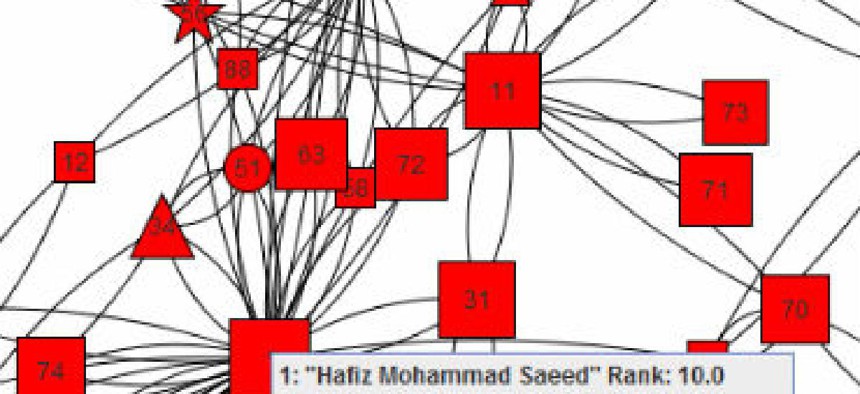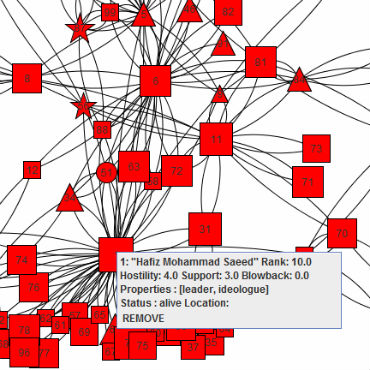Who's the next head of Hezbollah? New platform has some predictions

University of Maryland researchers test tool for mapping terror and criminal org charts.

University of Maryland scholars have developed a predictive analytics platform that can predict a criminal or terrorist organization's heir apparent.
A software platform developed by University of Maryland researchers can accurately predict who will rise to the top of terror or criminal organization after a top leader is killed, jailed or otherwise taken out of the operational picture.
The software, called the Shaping Terrorist Organizational Network Efficacy (STONE), is a graph database that could provide the national security and intelligence communities with a better understanding of the complex relationships that push leadership succession forward.
The researchers, led by V.S. Subrahmanian, a professor at the university's Institute for Advanced Computer Studies, used open source data to hypothetically test the STONE platform on four well-known terror groups, including al-Qaeda, Hamas, Hezbollah and Lashkar-e-Taiba (the group responsible for the 2008 attack on Mumbai, India).
Subrahmanian said the platform could predict with 80 percent accuracy which individual would ascend to a top leadership role when the sitting leader was removed from the position. The software draws its conclusions from unclassified data that included tidbits such as how long a person was actively involved with a particular group, their specific role and the roles of others which whom they directly associated.
Subrahmanian told FCW the information on the groups that formed the foundation of the platform was winnowed from worldwide news reports, data from scholarly papers and websites that track terrorists.
By predicting leadership changes, Subrahmanian said, STONE could also help refocus law enforcement and security agencies. Sometimes those groups become too fixed on a central figure as targets, when those individuals may be the hardest to get to. The database can show agencies that going after individuals in a group's second tier might weaken it more than capturing the top leader, he said.
Subrahmanian said he hopes to expand the capabilities of the platform, including the ability to do broader analysis of relationships of terror and criminal groups' operations. Government agencies that have access to even more detailed insider information could use STONE with even better accuracy.
The platform can be applied to other social groups as well, evaluating business as well as criminal networks. The next corporate CEO or the rising capo of a transnational drug cartel might also be predicted, but the researchers said those applications hadn't yet been tested.
Subrahmanian said he has not yet talked with the Homeland Security Department formally about the project, but hopes to soon.
NEXT STORY: Sequester not to blame for lack of innovation





